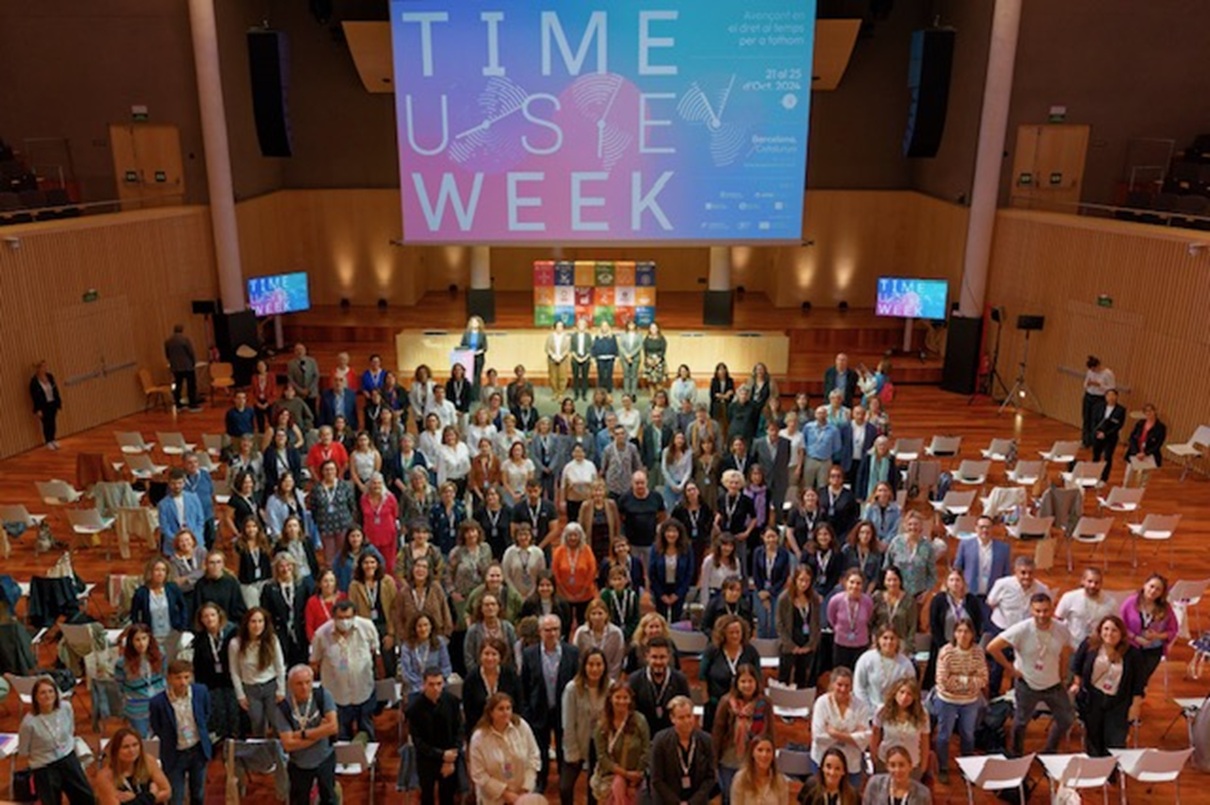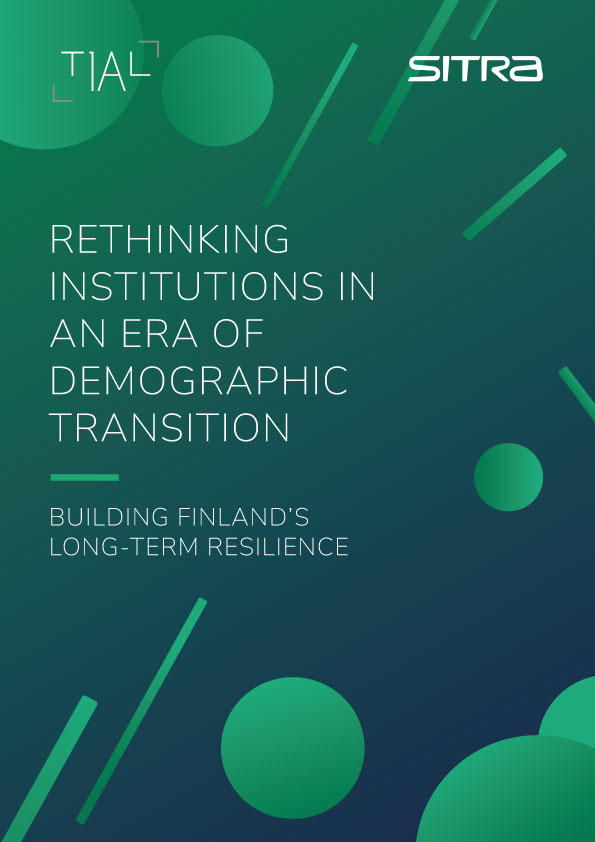Time has long been a focus for social reform, from 19th-century campaigns for 8-hour days to 20th-century movements for paid holidays and parental leave.
In the 21st century, there is growing interest in how time can be organised differently, partly because of sharp inequities between the time-rich and the time-poor, prompting institutional innovation to help cities, in particular, to coordinate time more effectively.
Aligning our reality and institutions with the effective use of time is an increasingly urgent demand from society.
Addressing this challenge requires a holistic state response, new structures that break down silos, and innovative tactics to tackle a complex yet critical issue.
Institutions often struggle to address transversal issues—challenges that cut across multiple policy domains, resist easy categorization, and require coordinated action across sectors.
One such issue is time.
Across the globe, societies are experiencing a time crisis, marked by widespread time poverty. Individuals increasingly lack the necessary time to meet essential responsibilities—whether paid work, sleep, self-care, or community engagement—leaving little to no room for personal well-being.
This imbalance is further exacerbated by structural factors, such as inadequate sleep, which has profound implications for both individual and societal resilience. Structural sleep deprivation contributes to an estimated 1–2% reduction in national GDP and severe health issues.
Research has shown that women, who often shoulder the majority of unpaid domestic and care work, experience greater time poverty, limiting their ability to participate fully in economic, social, and political life.
To tackle this challenge, time-use policies require new institutional structures that break down silos and enable a more integrated response across public services, labor regulations, and transportation.
Some focus on reducing inefficiencies, such as urban congestion; others seek to ease the burden on those balancing care and work; and emerging approaches explore how to enhance well-being by recognizing the fundamental role of rest and recovery in human health and productivity. These shifts call for innovative strategies that reframe how institutions govern time as a public resource.
Here, we look at recent innovations that are redefining society’s relation with time creatively. These approaches have been pioneered in cities such as Barcelona, Buenos Aires, Mexico City and Bogota and aim to make everyday life easier and more equitable.
Global implementation of time-use policies
Cities and countries worldwide have experimented with diverse time-use policies, continuously adapting and refining their approaches.
These policies reflect a broader effort to optimize time allocation, enhance community well-being, and foster more inclusive urban environments.
Innovative approaches to time often begin by collecting data on how people actually divide their time between activities like work, care, rest, and leisure.
Regular Time-Use Assessments, as implemented in Buenos Aires (3), and in most of the OECD countries, help policymakers identify required adjustments and targeted reforms, such as rescheduling school opening times or encouraging staggered starts for major employers. Recently, Spain has enacted a national time-use law focusing on labour practices, health, and sustainability, positively impacting 88% of employees by reducing working hours (4).
Barcelona: Long-term experimentation and learnings
Barcelona has spent over two decades developing institutional approaches to time, during which the initial focus on balancing work and family has transitioned into an approach that recognizes and asserts time as a citizenship right.
Since the 1990s, early experiments focusing on women’s role helped bring time in political and social debates, setting the stage for broader reforms. The city has been adopting time-use policies since 2003, with the establishment of Spain’s first time use council.
Key milestones include:
- The Time Pact (2011), which engaged businesses and civil society, grants for companies promoting work-life balance
- The appointment of a Time Policy Officer to integrate time equity across urban planning, labor policies, and public services.
In 2021, Barcelona promoted the Barcelona Declaration on Time Policies, the most comprehensive global commitment to time as a socio-economic resource.
The momentum behind time-use policies has been further supported by the Time-Use Initiative, an NGO launched in Barcelona in 2014.
Its main agenda is to advocate for the right to time and challenge traditional time structures. It organizes global events, coordinates networks of local and regional governments implementing time policies, and advises on legislative projects
Urban planning and mobility have also been key areas where time-use policies have been successfully integrated.
In Italy, the development of time-oriented policies began in the early 1990s with the City of Milan’s Urban Time Plan. This initiative aimed to coordinate public services, commercial activities, and transportation schedules to better meet citizens’ needs.
In 2023, Milano updated this plan using time policies to mitigate climate change. Additionally, cities such as Strasbourg and Rennes (France) have also reduced rush hours using time policies by analysing mobility’s time-flows and implementing graduated scheduling and incentive systems to distribute peak-hour demand.
Similarly, urban design in Paris has evolved to accommodate diverse time-based activities.
The establishment of the Night Council (Conseil de la Nuit) exemplifies efforts to balance a vibrant nightlife with residents’ well-being (London similarly appointed a ‘Night Czar’ in 2016).
Recognising the critical role of caregivers and with an aim to ensure the right to time, Bogotá has pioneered integrated support systems through its “Care Blocks” initiative.
These designated areas provide training, employment opportunities, and essential services to caregivers, contributing to the city’s recognition as the World Time Capital in 2025 (7).
Reclaiming Time: A New Policy Challenge
From these examples we can observe, time-use policies emerge from the recognition that traditional institutions, designed for an era with rigid temporal structures, struggle to address the complex and evolving demands of modern societies.
To be effective, these policies are guided by several key principles:
- they prioritize time equity, ensuring that the distribution of time-related resources—such as access to services, work flexibility, and public infrastructure—accounts for diverse needs across gender, age, and socioeconomic groups.
- They embrace systemic coordination, breaking institutional silos by integrating time into urban planning, labor policies, and public service design.
- They leverage data-driven adaptation, using real-time assessments of how people allocate their time to inform policy decisions, from school and work schedules to transport and healthcare access.
- They promote participatory governance, engaging businesses, civil society, and local communities in co-designing time policies that reflect lived realities.
- They recognize time as a public good, embedding the right to time in policy frameworks that go beyond efficiency to enhance well-being, sustainability, and social cohesion.
These principles form the foundation for innovative, responsive structures that rethink how institutions shape everyday life in an era of shifting temporal needs.
In each of these examples, the creation of new roles and policies that consider time as a central factor in urban and regional planning has been essential.
By working across sectoral and organizational boundaries, these initiatives aim to reduce inefficiencies and enable citizens to achieve a better balance between work, care, and leisure.
It is expected these to become more common over the next decade with more time officers, time strategies, and time mapping efforts to identify potential problems and bottlenecks – covering everything from the stresses of night-time work to congestion, care provision, and transport.
However, despite these advances, significant challenges remain.
Institutional inertia, political resistance, and sectoral silos often limit the integration of time-use policies into broader governance frameworks. Many initiatives struggle with sustained funding, policy continuity, and the need for cross-sectoral collaboration.
Addressing these issues demands a more profound re-evaluation of how institutions perceive, manage, and assign value to time.
The challenge is to go beyond the focus on efficiency and to place public purpose at the heart of institutional decision-making – ensuring that we prioritise the outcomes for the well-being of citizens and the broader societal good.
Without acknowledging the transverse nature of issues such as time, we risk confining interventions to narrow technical adjustments within rigid bureaucratic silos rather than embracing the structural transformations required to navigate the complexities of modern life.
At UNDP Istanbul Innovation Days
How can institutions evolve to address transversal well-being challenges —such as care, heat, and time—that cut across traditional silos and governance structures?
At Istanbul Innovation Days 2025, participants will, through plenaries, discussions, and workshops, engage with emerging models and practical innovations that push the boundaries of institutional design.
Much like the responses reshaping how societies govern time, IID will convene global thinkers and practitioners to rethink how institutions can mediate complexity and shape more secure and hopeful futures.
This case was researched as part of Istanbul Innovation Days 2025, the UNDP’s flagship event on public innovation, and first shared on the event’s official website. We are thankful to our colleagues at UNDP and Demos Helsinki whose contributions were essential for this case story to be told.







